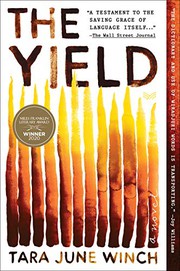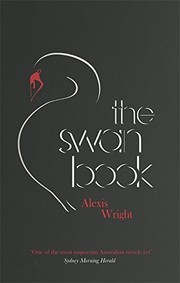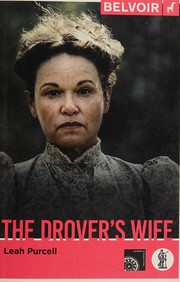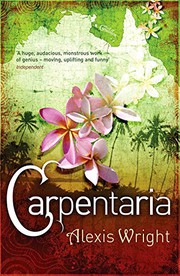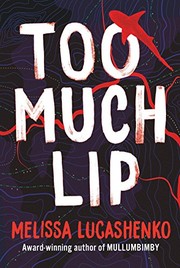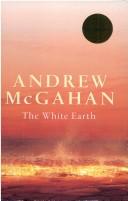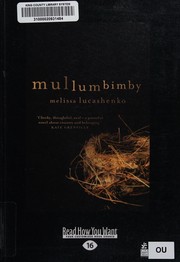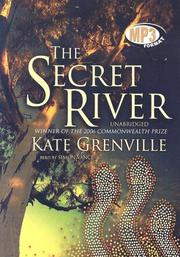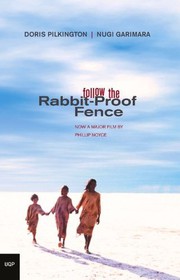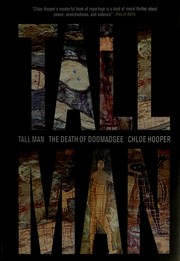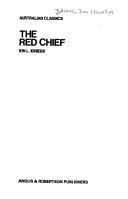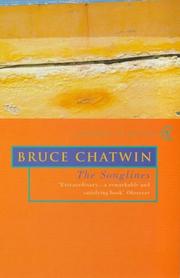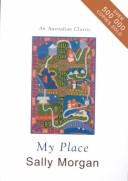Are you interested in learning more about the rich culture and history of Indigenous Australia? Look no further! We have compiled a list of the 20 best books on Indigenous Australia that will take you on a journey through the stories, traditions, and experiences of Australia’s First Nations people. From powerful memoirs to thought-provoking fiction, these books offer a deep insight into Indigenous Australian perspectives and experiences. Whether you’re a history buff, a literature enthusiast, or simply curious about the world around you, these books are sure to captivate and enlighten you.
Contents
- 1 20 Best Books About Indigenous Australia
- 2 The Yield
- 3 Talking to My Country
- 4 The Swan Book
- 5 The Drover’s Wife
- 6 Carpentaria
- 7 Too Much Lip
- 8 The White Earth
- 9 Mullumbimby
- 10 The Secret River
- 11 Follow the Rabbit-Proof Fence
- 12 The Tall Man
- 13 The Red Chief
- 14 The Songlines
- 15 My Place
- 16 The Biggest Estate on Earth: How Aborigines Made Australia
- 17 Why Warriors Lie Down and Die: Towards an Understanding of Why the Aboriginal People of Arnhem Land Face the Greatest Crisis in Health and Education Since European Contact
- 18 Growing Up Aboriginal in Australia
- 19 Becoming Kirrali Lewis
- 20 Dark Emu
- 21 The White Girl
- 22 Conclusion
- 23
- 24 20 Pianists Best Books to Read – The 2024 Edition
- 25 Best Books About Jackie Kennedy. 2024 Edition
- 26 Books about Evolution And Creationism: 2024's Best Titles
20 Best Books About Indigenous Australia
The Yield
by Tara June Winch
The Yield by Tara June Winch is a powerful and emotive book about Indigenous Australia, weaving together the past and present of the Wiradjuri people. The novel follows the story of August Gondiwindi, who returns to her childhood home after the death of her grandfather, Pop. Through Pop’s dictionary of Wiradjuri language and August’s reflections, the book explores the impact of colonization and the loss of language and culture on Indigenous communities. The novel is a profound exploration of identity, family, and the enduring connection to the land. Winch’s lyrical prose and rich storytelling make The Yield a captivating and essential read for anyone interested in the history and experiences of Indigenous Australians.
Talking to My Country
by Stan Grant
Talking to My Country by Stan Grant is a powerful and personal exploration of the author’s experience as an indigenous Australian. In this thought-provoking book, Grant delves into the complex issues surrounding identity, belonging, and the ongoing impact of colonization on indigenous communities. Through a combination of personal reflection and incisive analysis, Grant offers a deeply moving and insightful perspective on the challenges faced by indigenous Australians. With his compelling storytelling and candid voice, Grant invites readers to engage with the difficult truths of Australia’s history and to consider the importance of reconciliation and healing. This book is a must-read for anyone interested in understanding the complexities of indigenous Australia and the ongoing struggle for justice and recognition.
The Swan Book
by Alexis Wright
The Swan Book, written by Alexis Wright, is a captivating book about Indigenous Australia that weaves together elements of magical realism, social commentary, and environmentalism. Set in a dystopian future where climate change has ravaged the land, the story follows the young protagonist, Oblivia, who is mute and has an extraordinary connection with swans. As she navigates a world in turmoil, she encounters a cast of unforgettable characters and confronts the complex legacy of colonialism and cultural erasure in Indigenous Australia. Wright’s lyrical prose and rich storytelling make this book a compelling exploration of the resilience and spirit of Indigenous peoples in the face of adversity. The Swan Book is a thought-provoking and timely novel that offers a powerful perspective on the Indigenous Australian experience.
The Drover’s Wife
by Leah Purcell
The Drover’s Wife by Leah Purcell is a powerful and gripping book about life in the Australian outback. Set in the harsh landscape of the bush, the story follows a courageous and resilient indigenous woman as she navigates the challenges of raising her children alone while her husband is away droving. Purcell’s vivid portrayal of the landscape and the protagonist’s inner strength makes this a compelling and captivating read. The book delves into the complexities of indigenous Australia, shedding light on the struggles and triumphs of the characters. It offers a raw and authentic perspective on the harsh realities of life in the outback, making it a must-read for anyone interested in stories about indigenous Australia. The Drover’s Wife is a poignant and thought-provoking exploration of resilience, survival, and the indomitable spirit of its central character.
Carpentaria
by Alexis Wright
Carpentaria by Alexis Wright is a powerful and epic novel that delves into the complexities of life in the fictional town of Desperance, set in the harsh and mystical landscape of the Gulf of Carpentaria. This book on Indigenous Australia weaves together the stories of the eccentric and spirited residents as they navigate through issues of cultural identity, environmental exploitation, and the clash between Indigenous traditions and modern society. With breathtaking prose and a touch of magical realism, Wright paints a vivid and vibrant portrait of a community struggling to preserve its heritage and way of life. Through its rich storytelling and deep exploration of Indigenous Australia, Carpentaria is a must-read for anyone seeking a greater understanding of the complexities and beauty of Indigenous cultures.
Too Much Lip
by Melissa Lucashenko
Too Much Lip by Melissa Lucashenko is a powerful and unapologetic novel that delves into the complexities of family, identity, and the enduring impact of colonialism on Aboriginal communities. Set in the fictional town of Durrongo in Bundjalung country, the story follows the indomitable Kerry Salter as she returns home to confront her troubled past and fight for her family’s land. Through Kerry’s fierce and irreverent voice, Lucashenko crafts a compelling narrative that challenges stereotypes and sheds light on the resilience and strength of Indigenous Australians. With its raw and authentic portrayal of contemporary Aboriginal life, Too Much Lip is a must-read for anyone seeking a thought-provoking and unflinching exploration of the challenges facing First Nations people in Australia.
The White Earth
by Andrew McGahan
The White Earth by Andrew McGahan is a powerful and haunting book about indigenous Australia. Set in the Queensland outback, the novel follows the story of William, a young boy who is sent to live with his uncle on a decaying homestead. As he navigates the harsh and unforgiving landscape, William uncovers dark family secrets and confronts the brutal legacy of colonialism. The novel masterfully weaves together elements of history, spirituality, and the struggle for identity, offering a compelling exploration of the complexities of indigenous Australia. McGahan’s evocative prose and vivid storytelling make The White Earth a captivating and thought-provoking read that sheds light on the enduring impact of colonization on indigenous communities. This is a must-read for anyone interested in delving into the complexities of Australia’s indigenous history.
Mullumbimby
by Melissa Lucashenko
Mullumbimby, written by Melissa Lucashenko, is a captivating novel that delves into the complexities of life in rural Australia. The story follows Jo Breen, a strong-willed woman of Bundjalung descent, as she navigates the challenges of family, land, and identity. Set against the backdrop of the lush and untamed landscape of Mullumbimby, the novel weaves together themes of belonging, cultural heritage, and the clash between tradition and modernity. Lucashenko’s evocative prose and vivid portrayal of the Australian countryside make this a compelling and immersive read. The book offers a unique insight into the Indigenous Australian experience, making it a must-read for anyone interested in exploring the rich and diverse tapestry of Indigenous Australia.
The Secret River
by Kate Grenville
The Secret River by Kate Grenville is a compelling and thought-provoking book on Indigenous Australia. Set in the early 19th century, it follows the story of William Thornhill, a convict who is transported to New South Wales and eventually becomes a settler along the Hawkesbury River. As Thornhill tries to build a new life for his family, he grapples with the complex and often violent interactions between the European settlers and the Indigenous inhabitants of the land. The novel delves into the profound impact of colonization on the Indigenous communities, and the moral dilemmas faced by the settlers. Grenville’s vivid storytelling and rich character development make this book about Indigenous Australia a powerful and unforgettable read, shedding light on a dark and often overlooked chapter of Australian history.
Follow the Rabbit-Proof Fence
by Doris Pilkington
Follow the Rabbit-Proof Fence by Doris Pilkington is a captivating and heart-wrenching book about the resilience and strength of the Aboriginal people in Australia. Set in the early 20th century, the book follows the true story of three young girls who escape from a government settlement and embark on an incredible journey across the harsh Australian outback. Their goal is to find their way back home by following the rabbit-proof fence that stretches for miles across the country.
This powerful book sheds light on the mistreatment of Indigenous Australians during this dark period in history, while also celebrating the unbreakable spirit of the girls as they defy the odds and fight for their freedom. Pilkington’s storytelling brings to life the rich culture and traditions of the Aboriginal people, making this a must-read for anyone interested in learning more about the indigenous Australia.
The Tall Man
by Chloe Hooper
The Tall Man by Chloe Hooper is a gripping non-fiction book about indigenous Australia, focusing on the death of an Aboriginal man, Cameron Doomadgee, in police custody on Palm Island. Hooper delves into the complex issues of race, justice, and power in a small community, shedding light on the systemic oppression and discrimination faced by indigenous Australians. Through meticulous research and powerful storytelling, Hooper paints a vivid and heartbreaking picture of the events leading up to Doomadgee’s death, as well as the subsequent investigation and trial. The Tall Man is a thought-provoking and essential read for anyone interested in understanding the challenges and struggles faced by indigenous communities in Australia.
The Red Chief
by Ion L. Idriess
The Red Chief by Ion L. Idriess is a captivating book on Indigenous Australia that tells the adventurous and inspiring story of King Bungaree, the first Aboriginal to be commissioned as a chief in the British Empire. Set against the backdrop of early colonial Australia, the book delves into the cultural clash between Indigenous tribes and European settlers, offering a unique perspective on the history of the continent. Idriess skillfully weaves together historical facts and fiction to create a compelling narrative that sheds light on the resilience and resourcefulness of Indigenous people in the face of immense challenges. Through vivid storytelling and rich character development, The Red Chief offers readers a thought-provoking and immersive experience, making it a must-read for anyone interested in learning more about the complexities of Indigenous Australia.
The Songlines
by Bruce Chatwin
The Songlines is a captivating book by Bruce Chatwin that delves into the rich cultural traditions of Aboriginal Australia. This fascinating travelogue combines elements of memoir, anthropology, and fiction, as Chatwin explores the concept of “songlines” – the ancient paths that crisscross the Australian continent and are believed to have been created by the Dreamtime ancestors. Through his encounters with indigenous Australians, Chatwin provides a unique insight into the spiritual and cultural significance of these songlines, and the profound connection between the land and its people. This book offers a deep and thought-provoking exploration of the indigenous Australia, shedding light on its history, customs, and the enduring legacy of its traditional beliefs. The Songlines is a compelling and enlightening read for anyone interested in learning about the rich cultural heritage of indigenous Australia.
My Place
by Sally Morgan
My Place by Sally Morgan is a captivating autobiography that delves into the author’s personal journey of self-discovery and connection to her Aboriginal heritage. This powerful book on Indigenous Australia takes readers on a poignant exploration of identity, culture, and history. Through compelling storytelling and vivid imagery, Morgan skillfully weaves together her family’s experiences, spanning multiple generations, to illuminate the resilience and strength of Indigenous Australians. As the narrative unfolds, readers gain insight into the challenges and triumphs faced by the author and her family, offering a profound understanding of the complexities of Indigenous Australia. My Place is a deeply moving and insightful book about Indigenous Australia that sheds light on the enduring spirit of a people and their enduring connection to the land.
The Biggest Estate on Earth: How Aborigines Made Australia
by Bill Gammage
The Biggest Estate on Earth: How Aborigines Made Australia by Bill Gammage is a groundbreaking book on indigenous Australia that challenges the conventional view of the continent before European settlement. Gammage explores the deep connection between the Aboriginal people and the land, revealing how they managed the environment through sophisticated land management practices such as controlled burning and selective clearing. Through extensive research and compelling evidence, the author paints a vivid picture of an Australia that was not a wild, untamed wilderness, but a carefully cultivated and sustainable landscape. This book about indigenous Australia offers a new perspective on the country’s history and the complex relationship between its original inhabitants and the land. It is a must-read for anyone interested in understanding the true nature of indigenous Australia’s environmental stewardship.
Why Warriors Lie Down and Die: Towards an Understanding of Why the Aboriginal People of Arnhem Land Face the Greatest Crisis in Health and Education Since European Contact
by Richard Trudgen
Why Warriors Lie Down and Die is a compelling book on Indigenous Australia that delves into the health and education crisis faced by the Aboriginal people of Arnhem Land. Written by Richard Trudgen, the book offers an insightful exploration of the challenges and issues that have arisen since European contact. Trudgen provides a deep understanding of the cultural and historical factors that have contributed to the crisis, shedding light on the complex realities faced by Indigenous communities. Through his research and experiences, Trudgen offers a thought-provoking analysis of why the Aboriginal people of Arnhem Land are facing such significant challenges in health and education. This book is essential reading for anyone seeking to gain a deeper understanding of the issues facing Indigenous Australia and the impact of historical and cultural dynamics on contemporary Indigenous communities.
Growing Up Aboriginal in Australia
by Anita Heiss
Growing Up Aboriginal in Australia by Anita Heiss is a captivating and powerful collection of personal stories from a diverse range of Indigenous Australians. This book offers a unique and insightful perspective on the experiences, challenges, and triumphs of growing up as Aboriginal in Australia. Through a series of compelling narratives, readers are given a rare glimpse into the rich and complex tapestry of Indigenous culture, identity, and history. From the struggles of discrimination and prejudice to the resilience and strength of Indigenous communities, this book provides an important and timely exploration of the lived experiences of Aboriginal Australians. With its honest and thought-provoking accounts, Growing Up Aboriginal in Australia is a must-read for anyone seeking a deeper understanding of Indigenous Australia.
Becoming Kirrali Lewis
by Jane Harrison
Becoming Kirrali Lewis by Jane Harrison is a powerful coming-of-age novel that delves into the complexities of identity, culture, and belonging. Set in Australia, the story follows Kirrali, a young Aboriginal girl who is adopted by a white family. As Kirrali navigates her way through adolescence, she grapples with the challenges of living in two worlds and the longing to connect with her Indigenous roots. The novel provides a poignant exploration of Indigenous Australian culture, family ties, and the impact of colonialism. With themes of self-discovery and resilience, Becoming Kirrali Lewis offers a thought-provoking and emotionally resonant reading experience. This book about Indigenous Australia is a must-read for those seeking a deeper understanding of Indigenous experiences and the complexities of cultural identity.
Dark Emu
by Bruce Pascoe
Dark Emu by Bruce Pascoe is a groundbreaking book on Indigenous Australia that challenges the traditional narrative of hunter-gatherer societies. Pascoe meticulously presents evidence of the complex agricultural and architectural practices of Indigenous Australians, debunking the myth of the continent as ‘terra nullius’. Through detailed research, he highlights the sophisticated systems of land management, farming, and aquaculture employed by Aboriginal communities prior to European colonization. This Indigenous Australia book offers a compelling re-evaluation of Indigenous history and culture, shedding light on the rich and advanced civilizations that existed for thousands of years. Dark Emu is a thought-provoking and eye-opening exploration of Indigenous Australia’s past, essential for anyone seeking a deeper understanding of the continent’s indigenous peoples.
The White Girl
by Tony Birch
The White Girl by Tony Birch is a poignant and powerful book on Indigenous Australia, set in the 1960s. The novel follows Odette, an Aboriginal woman, and her granddaughter Sissy as they navigate the racial tensions and injustices of their small Australian town. When Sissy is threatened to be taken away by the government, Odette must fight to protect her and defy the oppressive authorities. Birch skillfully explores themes of love, resilience, and the enduring strength of Indigenous communities in the face of adversity. Through vivid prose and compelling characters, the book about Indigenous Australia sheds light on the enduring impact of colonization and the importance of family and culture. The White Girl is a must-read for those interested in Indigenous Australia and its history.
Conclusion
Exploring the 20 best books about Indigenous Australia provides a fascinating insight into the rich culture, history, and traditions of the Aboriginal and Torres Strait Islander peoples. These books offer powerful narratives, insightful perspectives, and invaluable knowledge that contribute to a deeper understanding and appreciation of indigenous Australian heritage. Whether delving into ancient legends, contemporary issues, or personal stories, these books are essential reads for anyone seeking to broaden their awareness and knowledge of indigenous Australia.
Which Indigenous Australia book is best?
The best book on Indigenous Australia can vary with personal preference, but three widely recommended titles are:
Each offers valuable insights and could be a great starting point.
What are the best books to learn about Indigenous Australia?
For those looking to learn about Indigenous Australia, there is a wealth of literature that can provide a comprehensive understanding of the subject. Some of the most highly recommended books include:
- The Yield by Tara June Winch,
- Talking to My Country by Stan Grant,
- The Swan Book by Alexis Wright,
- The Drover’s Wife by Leah Purcell,
- Carpentaria by Alexis Wright,
- Too Much Lip by Melissa Lucashenko,
- The White Earth by Andrew McGahan,
- Mullumbimby by Melissa Lucashenko,
- The Secret River by Kate Grenville,
- Follow the Rabbit-Proof Fence by Doris Pilkington
These books offer a range of perspectives on Indigenous Australia, covering various aspects and approaches to the subject.
What are the best books on Indigenous Australia?
The best books on Indigenous Australia include:
- The Yield by Tara June Winch,
- Talking to My Country by Stan Grant,
- The Tall Man by Chloe Hooper,
- The Red Chief by Ion L. Idriess,
- Mullumbimby by Melissa Lucashenko,
- Too Much Lip by Melissa Lucashenko.
Each offers unique insights into the subject. While these books on the topic of Indigenous Australia are highly regarded, it’s important to note that any list of ‘best’ books is subjective and reflects a range of opinions.
What are the best Indigenous Australia books of all time?
Choosing the best Indigenous Australia books of all time can vary depending on who you ask, but seven titles that are often celebrated include
- The Yield by Tara June Winch,
- Talking to My Country by Stan Grant,
- Carpentaria by Alexis Wright,
- Mullumbimby by Melissa Lucashenko,
- Follow the Rabbit-Proof Fence by Doris Pilkington,
- The Red Chief by Ion L. Idriess,
- and The Tall Man by Chloe Hooper.
Each of these books has made a significant impact in the field of Indigenous Australia and continues to be influential today.

